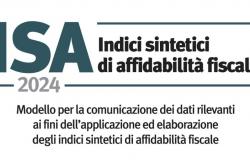Listen to the audio version of the article
In recent days, the European Commission has approved the new Fer2 decree which encourages the construction of renewable energy production plants that are not fully mature or have high operating costs. But the approval raised an immediate uproar linked to the cost, quantified by Brussels itself at 35.3 billion euros, of the incentives intended for this type of technology, starting with offshore wind (to which the bulk of the resources provided from the provision). It is therefore good to provide some clarity on the expected impact on our bills which will not arrive quickly but only when the decree begins to take effect, i.e. not before 2029.
The cost of renewables included in the system charges
Let’s start by remembering first of all that the impact on bills linked to incentive mechanisms for renewables is nothing new. And this is because our bills already include the costs of existing mechanisms, some of which will expire in the next few years as they are incentives that have been in place for some time now and have practically reached the end of their life. These incentives are paid in the bill through the general system charges – and, in particular, by the Asos component – through which the costs for activities of general interest for the national electricity system are financed.
Which sources will be encouraged
Coming to the new decree, therefore, it is first necessary to clarify that that threshold, indicated by Brussels, represents a maximum bar also because the real cost to be borne to finance those incentives will vary depending on future energy prices. Why? The answer must be sought in the same mechanism with which the green sources listed in the decree will be remunerated which are, in addition to offshore wind, floating photovoltaic and thermodynamic solar, but also systems powered by tidal energy, wave motion and other forms of marine energy, as well as biomass and biogas.
How aid will be paid to operators
The aid provided for by the Legislative Decree will be provided through a two-way contract for difference for each kilowatt hour of electricity produced and fed into the grid and will be insured for a duration equal to the useful life of the power plants (25 years, for example, for offshore wind farms open). In practice, the GSE, director of the incentives, will calculate the difference between the tariff due (which varies depending on the technology considered) and the price of hourly zonal electricity (i.e. the price of electricity at the moment in which the injection takes place in the network and in the market area where the plant is located): if positive, the GSE will provide the incentives by applying a premium rate equal to this difference; if negative, it will proceed with an adjustment or request the corresponding amounts from the subject.
A maximum outlay of 1.85 billion euros per year
It will therefore be necessary to take into account a series of variables to understand what the definitive impact on the state coffers of the incentives covered by Fer2 will be and, consequently, the impact on the bill. The 35.3 billion should therefore be considered as a maximum level which is also distributed, it is worth remembering this over 20 years (the estimated useful life of the plants). Ergo: for each year the outlay will be around 1.85 billion, as long as that maximum bar is reached.







